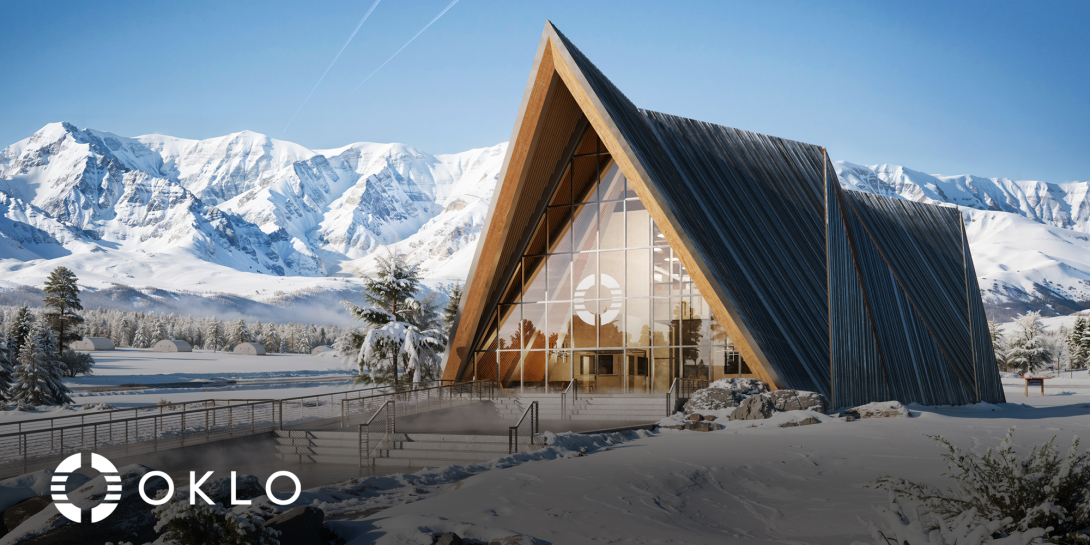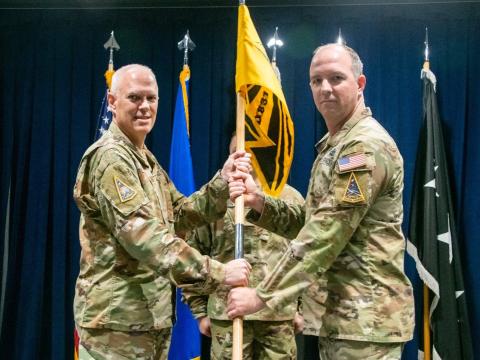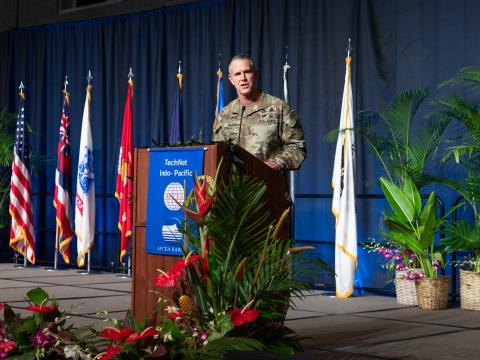Air Force Moves Forward With Arctic Microreactor Energy Project
In Alaska, at Eielson Air Force Base, temperatures just reached 70 degrees for the first time in nine months. That, combined with the remote location, permafrost and shorter daylight spans, makes the region the perfect location for the U.S. Air Force’s latest venture: a micronuclear reactor.
Officials announced progress on the effort in a call with reporters Wednesday. The service also reported in a statement Wednesday the issuance of a notice of intent to award a contract to Santa Clara, California-based Oklo Inc., which specializes in manufacturing advanced nuclear reactors.
The installation will be the U.S. Department of Defense’s first commercial microreactor deployment.
The service awarded the company a 30-year, firm-fixed-price contract for Oklo to site, develop and operate a 5-megawatt microreactor.
Eielson, home to the 354th Fighter Wing and its cadre of F-35 Lightning II aircraft, currently relies on a 23-MW coal-fired power plant, especially during Alaska’s harsh winter months. The nuclear plant will augment their power supply.
Given the groundbreaking nature of the effort, the Air Force will rely on lessons learned from the Idaho National Laboratory, which has been advancing micronuclear power projects already, said Nancy Balkus, deputy assistant secretary of the Air Force for Infrastructure, Energy and Environment.
For Col. Paul Townsend, commander, 354th Fighter Wing, the effort to add reliable power to the base would aid its strategic mission. It must operate in temperatures as low as 50 below zero while supporting critical homeland defense missions, including intercepting Russian and Chinese military aircraft in the Alaskan Air Defense Identification Zone.
“Having safe and reliable energy is absolutely critical to producing airpower here in the Arctic,” Townsend explained. “The base's current combined heat and power plant operates between 10-12 megawatts in summer and up to 18-19 megawatts during winter operations.”
Oklo's microreactor design leverages liquid metal fast reactor technology, which offers inherent safety advantages over conventional nuclear systems, said Jacob DeWitte, Oklo’s CEO.

Having safe and reliable energy is absolutely critical to producing airpower here in the Arctic.
The plant can be designed with self-stabilizing and self-cooling, shutting down if something happens that causes them to overheat, DeWitte said.
The microreactor would use a uranium zirconium alloy fuel that could operate for up to 10 years without refueling—a great way to avoid supply chain issues seen with traditional fuel sources in remote Arctic locations.
“It’s the amazing energy density of the atom itself,” the CEO said. “And that's one of the great things here is you can load up all the fuel you need for a long period of time and not be subject to fuel supply disruptions.”
The officials also noted that they are working with partners in Alaska and in the greater nuclear energy community to share repeatable lessons learned along the way.
“This microreactor pilot program could position Alaska and the nation at the forefront of energy innovation—leading us to a new era of safe, secure and reliable energy,” Secretary of the Air Force Troy Meink said in the statement. “It has the potential to shape future approaches to powering national security infrastructure, especially in the Arctic—where energy reliability is vital in the face of evolving threats."





Comments